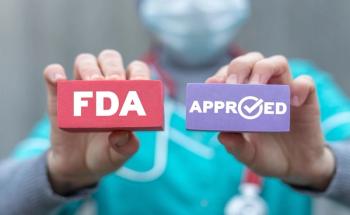
Hopkins Study Finds No Immediate Drop in Emergency Department Use After Medicaid Expansion
Researchers found very little dropoff in emergency department use in the first months after Medicaid expansion, but they did find a change in the payer mix. In addition, expansion did help stabilize finances for both hospitals and patients.
Johns Hopkins researchers studying the dawn of Medicaid expansion in Maryland have found the same emergency department (ED) patterns reported elsewhere: getting a Medicaid card isn’t going to change a lifetime of behavior overnight, especially if there aren’t enough family doctors to handle an influx of new patients.
The study, reported today in the Annals of Emergency Medicine, found a tiny drop in ED visits in the period following Medicaid expansion. What mattered is that the payer mix of people coming to the ED changed, with fewer uninsured and a proportional share newly covered by Medicaid.
"Through the Medicaid expansion, there were some people who believed more patients would choose to go to primary care providers instead of the emergency department, because now they have health coverage, and there were some people who believed that the expansion would swamp the emergency department," Eili Klein, PhD, MA, assistant professor of Emergency Medicine in the Johns Hopkins University School of Medicine, said in
Researchers compared the 18-month period before expansion with the 18 months that followed, excluding the first 6 months of 2014 as people newly eligible for coverage under expansion signed up. As written, the Affordable Care Act (ACA) called for extending coverage to households with incomes up to 138% of the federal poverty level, but the Supreme Court ruled that states could decide whether to extend coverage. Maryland was among those that allowed expansion from the start.
Maryland emergency departments saw a 6% drop in the share of uninsured visiting the ED, with a proportional 6% rise in those covered by Medicaid. The decrease of 36,000 visits, when the Medicaid population grew by 160,000 in a year, was so small that the researchers didn’t find it significant.
The study illuminates what has been reported elsewhere: Medicaid expansion, by itself, will not immediately change longtime patterns among patients who have never had insurance; in fact, health systems have had to create strategies to teach them how to access primary care. Swedish Medical Center in Seattle, Washington, partnered with an
The challenge starts with connecting Medicaid patients with primary doctors. In New Jersey, Horizon Blue Cross Blue Shield, through its
But in some cases, the newly insured went straight to the ED because they needed to be there. Many had gone years without proper medical care and had serious medical conditions.
"It was unrealistic to expect emergency department visits to decrease immediately after the ACA enactment," said Gabor Kelen, MD, director of the Johns Hopkins Department of Emergency Medicine. "The ACA did not really address incremental primary care access for the newly insured. Many new Medicaid-insured patients are still dealing with serious conditions that require emergency hospital care. Also, a population who could only previously receive care in the emergency department is not likely to immediately change this tendency."
Researchers found that of the uninsured patients visiting an emergency department before the ACA took full effect, 37% visited the ED at least once in the first 18 months after January 1, 2014. About 28% of those patients remained uninsured throughout, while 31% were consistently enrolled in Medicaid.
Even though the ACA has not reduced use of the ED in the short term, it has improved the bottom line for safety net hospitals—and for patients. A study recently found the ACA has reduced
"It does protect many patients from expenses of healthcare services and gives hospitals increased financial security," Klein said.
Reference
Klein EY, Levin S, Toerper MF, et al. The effect of Medicaid expansion on utilization in Maryland emergency departments [published online July 24, 2017]. Ann Emerg Med. 2017.
Newsletter
Stay ahead of policy, cost, and value—subscribe to AJMC for expert insights at the intersection of clinical care and health economics.







































